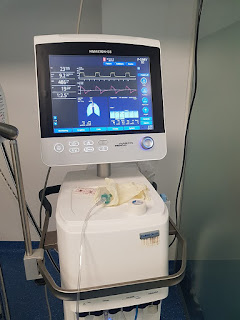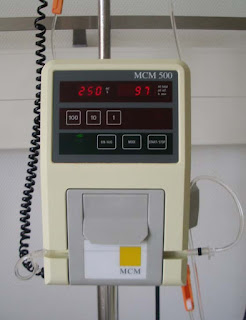Hi friends!!!
Stethoscope is a important medical devices used by doctors in their day to day activities. Therefore it is important for every healthcare professionals to know in detail about the technology of stethoscope.
Let’s get into the topic.
WHY STETHOSCOPE?
Stethoscope is a device used by clinicians and doctors to listen to the sound that is coming out internally from the human body and to find blood pressure in veins and arteries. Most modern stethoscopes are binaural, which means a instrument intended for use in both ears.
The use of stethoscope started back since 1816. It was invented by French Physician named Rene Laennec by using a long rolled paper tube to funnel the patients sound from the chest to his ear rather than directly placing his ear on patient’s chest. It provided a great improvement in hearing both heart and lung sounds.
WHAT ARE THE COMPONENTS OF STETHOSCOPE?
A stethoscope consists of ear plugs, ear tube, binaural spring, flexible tubing, a steam and a chest piece called resonator. (Diaphragm and Bell).
The earplugs are attached to the binaural springs made of steel so that they fit firmly in the ears. The ear plugs are made of plastic or silicon rubber. The ear plugs are connected to the binaural spring through the ear tubes and the flexible tube is connected to the chest piece through the steam. The chest piece is made up of metal like aluminum, chrome plated brass or stainless steel.
The flexible tube is made up of polyvinyl chloride or latex rubber. The flat diaphragm is formed from a flat, thin, rigid plastic disk that can be Bakelite, an epoxy fiberglass compound or other suitable plastic. Now a days most of the stethoscopes have an anti-chill ring attached to both sides of diaphragm which are more comfortable for the patients and also it has better suction thus allows sounds to be heard more clearly.
WHAT IS THE TECHNOLOGY USED?
When a diaphragm of stethoscope is placed on the chest of the patient, a vibration occurs at the flat surface of the stethoscope, as a result of sound waves that is being generated from the patient’s body. Those vibration would travel outward if the diaphragm is a standalone device. But since it is connected to a tube in stethoscope, vibration is picked up by the diaphragm and being protected externally to prevent the sound loss and thereby channeled through the tube in a specific direction.
Inside the tube a multiple collision tends to occur as a result of wave collision within the wall of the tube, it is called MULTIPLE REFLECTION. This continues until the sound reaches the listeners ear drum at the other end of the device. By this way the high frequency sound waves produced by opening and closing of the arteries vibrate the diaphragm and reach the listeners ears.
The working principle of bell is different from that of the diaphragm. It has a smaller surface area and it was designed in such a way that it detects and picks up lower pitched sounds. These lower pitched sounds have harder time in vibrating the larger surface of the diaphragm, but it still vibrates the skin as it moves outward. The bell picks up the vibration of the skin caused by the movement rather than the vibration of the arteries which directly vibrates the diaphragm.
WHAT ARE THE TYPES OF STETHOSCOPE?
ACOUSTIC STETHOSCOPE
It is the most commonly used type of stethoscope which works based on the transmission of sound waves emanating from the round shaped resonator to the listeners ears with the help of hollow tube. The round shaped resonator is placed against the patient to hear the body organ sound. It consists of two parts, a diaphragm and a bell. The diaphragm transmits high frequency sound while the bell transmits low frequency sound.
ELECTRONIC STETHOSCOPE
One problem with acoustic stethoscope is that its sound level is low. Electronic stethoscope uses advanced technology to overcome these low sound levels. It works the same as acoustic stethoscope but it has some additional features like amplifiers and speakers to amplify the low frequency sounds and to attenuate the low and high frequency sounds.
Electronic stethoscope converts acoustic sound waves obtained from chest piece into electronic signals which are then transmitted through a circuitry and processed for optimal listening. One disadvantage of electronic stethoscope is that it suffers from ambient noise interference. The circuitry also allows sound energy to be encoded and decoded to reduce the effect of ambient noise.
Electronic stethoscope has an option for wireless transmission of data and recording of sound clips for detailed examination.
Check out for this blog.
DIATHERMY PART 1 & PART 2.
https://biomedicalviews.blogspot.com/2020/06/diathermy-part-1.html?m=1
https://biomedicalviews.blogspot.com/2020/06/diathermy-part-2.html?m=1
DON’T FORGET TO FOLLOW THIS BLOG PAGE
DROP YOUR MAIL ID TO GET IMMEDIATE UPDATES
If you find this blog post knowledgeable, comment & share it with a friend!





Good information!
Nicee one